Templo Mihwangsa (미황사)
.0M 2025-01-14
Mihwangsa-gil 164, Songji-myeon, Haenam-gun, Jeollanam-do
Construido durante el octavo año de reinado de Gyeongdeok de Silla (749), el templo Mihwangsa se ubica en la ladera occidental del monte Dalmasan (de 489 m de altura), en el monte Geumgangsan del Mar del Sur. Es el templo ubicado en el extremo meridional de la península coreana. El hermoso atardecer y la impresionante vista del monte Dalmasan desde el templo atrae a numerosos turistas. Esta edificación armoniza con el bello entorno y la delicada apariencia del pabellón Daeungbojeon le da un aire de tranquilidad y comodidad. El pilar de Daeungbojeon tiene talladas criaturas marinas, como tortugas y cangrejos que no se pueden ver en otros edificios de su tipo. Además, se puede disfrutar de las estatua que alberga el templo, tal como Gwebul (Tesoro Nacional), donde la gente reza por la lluvia durante la estación seca. Otras atracciones incluyen murales del siglo XVIII en las paredes de Daeungbojeon y Unginjeon, y clásicas estatuas budistas como bosal, nahan, dongja y shinjangsang.
Museo de Historia Natural y Marina de Ttangkkeut (땅끝해양자연사박물관)
6.4Km 2021-12-28
Jungdaedong-gil 5-4, Songji-myeon, Haenam-gun, Jeollanam-do
+82-61-535-2110
El museo presenta aproximadamente 40.000 piezas de alrededor de 25.000 especímenes de animales marinos de la zona y del mundo.
Haemaru healingsoup [Korea Quality] / 해마루 힐링숲 [한국관광 품질인증]
8.0Km 2020-12-12
108-35, Donghae-gil Bukpyeong-myeon, Haenam-gun, Jeollanam-do
+82-10-2332-6303
'Haemaru Healing Forest is a guesthouse situated at the foot of Duryunsan Mountain, Haenam in front of Wondo Beach and surrounded by a cypress grove. The mountain, cypress grove, and beach are all visible from the main floored hall room. For this reason, many of the guests who stayed here say that the picturesque view seems to change day by day. The town where the guesthouse is located is specially designed as a 'hanok village,' consisting mostly of traditional Korean houses of Jeollanam-do. It is also widely known as 'Haenam Kimchi Village' because of their famous cabbages, which are grown in the natural environment and are used to make kimchi. Specifically, there are three villages in this area: 'Green Experience Village,' 'Farm Stay Village,' and 'Resort Village.' There is a public swimming pool in the area managed by the villagers and is very popular among visitors, with ticket sales reaching KRW 100,000,000 a year. One of the advantages of staying at this guesthouse is that it’s within a one-hour ride to a number of popular nature destinations such as Wando Cheongsando Island, Gangjin Dasan Chodang, Jangheung Cheongwansan Mountain, Woodland, and Yeongam Wolchunsan Mountain. Haenam is known as one of the best regions of Korea for enjoying the famous Jeolla-do cuisine, so visitors to Haenam are advised to try the local food. The villagers built these traditional Korean guesthouses so that their visitors can have a day of relaxation in nature, away from their hectic city life. With this mind, they used natural pinewood and red clay from Gangwon-do to build authentic traditional Korean houses and utilized traditional Korean tiles from Goryeong. The name 'Haemaru Healing Forest' was given by the owner of the guesthouse, with the subtitle 'A place where you can tell your story.' The guesthouse buildings are in 'ㄱ' shape. The main building, called 'anchae' in Korean, has floor area of 72m², which is big enough for up to 25 people. There are two rooms, a large living room, and a kitchen in this building. The rooms are furnished with sofa, television, air conditioner, refrigerator, and table just like an ordinary home so that guests can feel at home during their stay. The 'bakkatchae,' or 'detached house,' is a single room with capacity of 6 and is furnished with air conditioner and bathroom. The guesthouse is owned by a couple who still work in Seoul and need to travel back and forth between Seoul and Haenam frequently. They're both nature lovers, so their most favorite place in the house is the kitchen garden where they cultivate their own organic lettuce, perilla leaves, and chili peppers. The kitchen garden is open to guests who want to try the homegrown organic vegetables. Various experience programs are offered here as well, such as yunnori, dadeumi, jwibulnori, and kimchi making. Jwibulnori is a traditional Korean game played on the eve of Daeboreum or First Full Moon Day, where people burn dry grass on the ridges of rice paddies and fields and others spin cans of flames attached to the end of a stick or a sling. For safety reasons, this game is played with the consent and participation of the villagers, so be sure to ask the owner of the guesthouse when the game is played. It’s free for groups of more than 10 people. As for the kimchi-making class, it is offered by the guesthouse owner's younger brother and sister-in-law who live and run a kimchi factory in the village. They will teach you how to make kimchi, step-by-step, start to end. The kimchi-making class is a paid program, so be sure to ask the guesthouse owner how much and when the class is held.
Arboreto de Wando (완도수목원)
8.0Km 2024-12-04
Chopyeong 1-gil 156, Gunoe-myeon, Wando-gun, Jeollanam-do
+82-61-550-1544
Creado en 1991, el Arboreto de Wando es el único bosque templado de Corea, en un país donde solo el 15% del paisaje tiene este clima. El Arboreto de Wando es un bosque de hojas perennes con alto valor medicinal, y con un área total de 200 ha, donde se encuentran 709 especies como las Goodyera, Calanthe striata y Cephalanthera falcata.
Hay un total de 30 jardines, un invernadero y un camino hasta el observatorio, donde los visitantes pueden disfrutar de las vistas al Parque Nacional Dadohaehaesang y Namdo. También es una oportunidad para aprender aspectos ambientales en un espacio ideal para relajarse.
Festival del Atardecer y del Amanecer de Ttangkkeut (땅끝 해넘이해맞이축제)
10.2Km 2024-12-31
Ttangkkeut Maeul-gil 42, Songji-myeon, Haenam-gun, Jeollanam-do
061-530-5159/60
El Festival del Atardecer y del Amanecer de Ttangkkeut tiene lugar en la aldea Ttangkkeut, en Songji-myeon, Haenam-gun, Jeollanam-do. Este festival incluye una ceremonia al atardecer y otra al amanecer, además de un concierto de música. El evento es famoso por sus vistas únicas del amanecer a través de las rocas de Hyeongjebawi, cerca del Puerto de Galdu.
** El festival ha sido cancelado. **
Maemseom Hoetjip (맴섬횟집)
10.4Km 2021-03-26
60-18, Ttangkkeunmaeul-gil, Haenam-gun, Jeollanam-do
+82-61-533-3561
It provides a course meal menu that lets you enjoy various types of seafood at a time. This restaurant's signature menu is assorted sliced raw fish. This Korean dishes restaurant is located in Haenam-gun, Jeollanam-do.
Sitio Turístico Ttangkkeut (땅끝 관광지)
10.4Km 2021-12-27
Ttangkkeutmaeul-gil 60-28, Songji-myeon, Haenam-gun, Jeollanam-do.
+82-61-530-5544
El Sitio Turístico Ttangkkeut es un sitio muy famoso de la península coreana situado en Songji-myeon de Galdu-ri. Aquí es donde termina el monte Baekdusan y se considera como el punto final del territorio coreano siendo uno de los destinos infaltables del turismo de Haenam. En el pico Sajabong hay un observatorio que ofrece vistas maravillosas creadas del monte Dalmasan y el mar de Haenam, y un poco más arriba se encuentra Bongwhadae, lugar donde encendían los soldados una antorcha gigante para avisar a las tropas si llegaban barcos enemigos. En la aldea se organizan diferentes festivales y eventos especiales cada fin y comienzo del año, los cuales también atraen a muchos turistas.
Observatorio de Ttangkkeut (땅끝전망대)
10.8Km 2025-01-23
Ttangkkeutmaeul-gil 100, Songji-myeon, Haenam-gun, Jeollanam-do
Pasarela Panorámica de la Torre de Ttangkkeut (땅끝탑 스카이워크)
10.9Km 2025-01-23
Songho-ri San 43-3, Songji-myeon, Haenam-gun, Jeollanam-do
Templo Daeheungsa (대흥사) [Patrimonio de la Humanidad de la Unesco]
11.1Km 2023-02-20
Daeheungsa-gil 400, Samsan-myeon, Haenam-gun, Jeollanam-do.
El templo se encuentra ubicado en el interior del Parque Provincial del Monte Duryunsan, a 12 km de distancia hacia el sudeste de Haenam-eup. Fue construido por el monje Adohwasang, a los 14 años del reinado de Muryeong de la época Baekje, y a lo largo de la historia ha sido restaurado y reparado varias veces. En el año 1604, a los 37 años del reinado de Seonjo, el monje Seosandaesa predicó que el lugar estaría a salvo de los desastres naturales y se mantendría en calma durante mucho tiempo, por lo que en los últimos momentos de su vida, pidió conservar sus objetos personales en este templo.
El nombre original del templo era Daedunsa, pero durante el período colonial japonés recibió el nombre de Daeheungsa, hasta que en el año 1993 volvió a ser nombrado como Daedunsa. El monje Seosandaesa es un personaje histórico que durante toda su vida se esforzó para proteger el país. Varias reliquias y pertenencias del monje se encuentran conservadas en este templo.
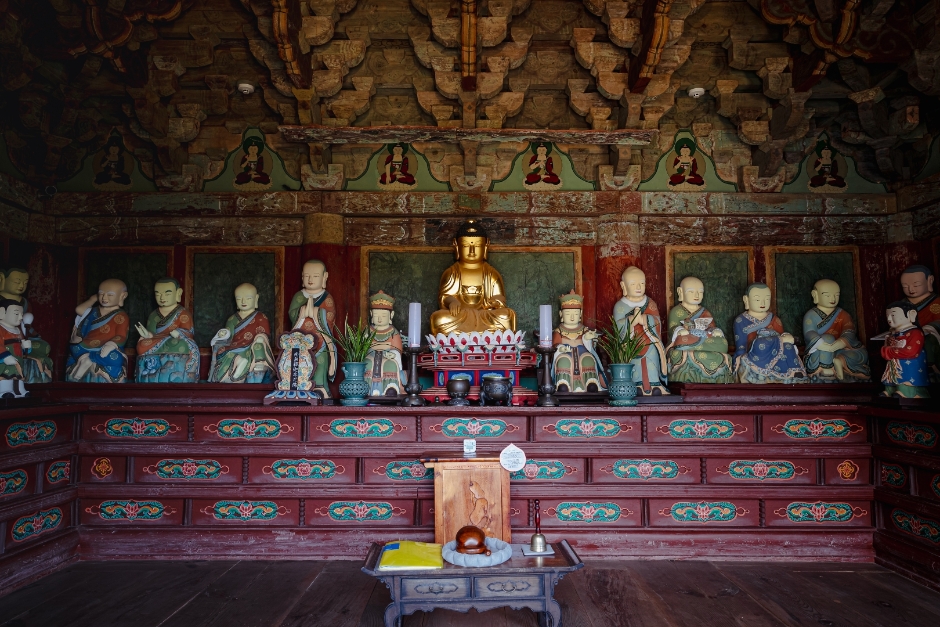
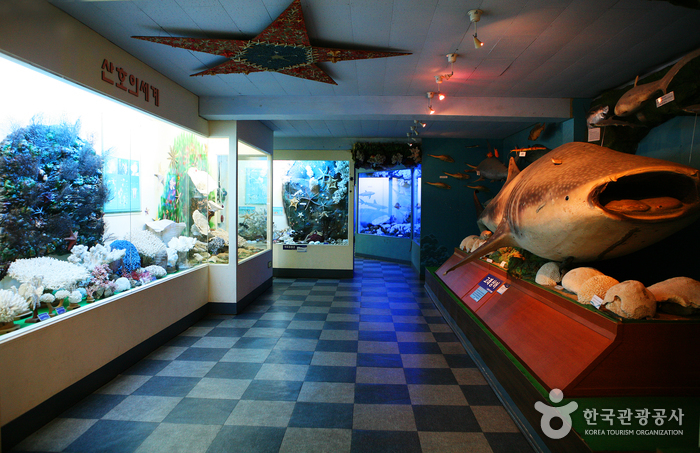
![Haemaru healingsoup [Korea Quality] / 해마루 힐링숲 [한국관광 품질인증]](http://tong.visitkorea.or.kr/cms/resource/35/2049835_image2_1.jpg)
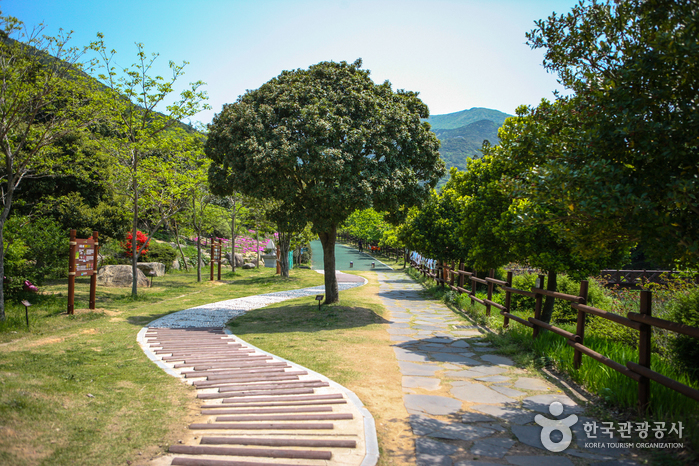
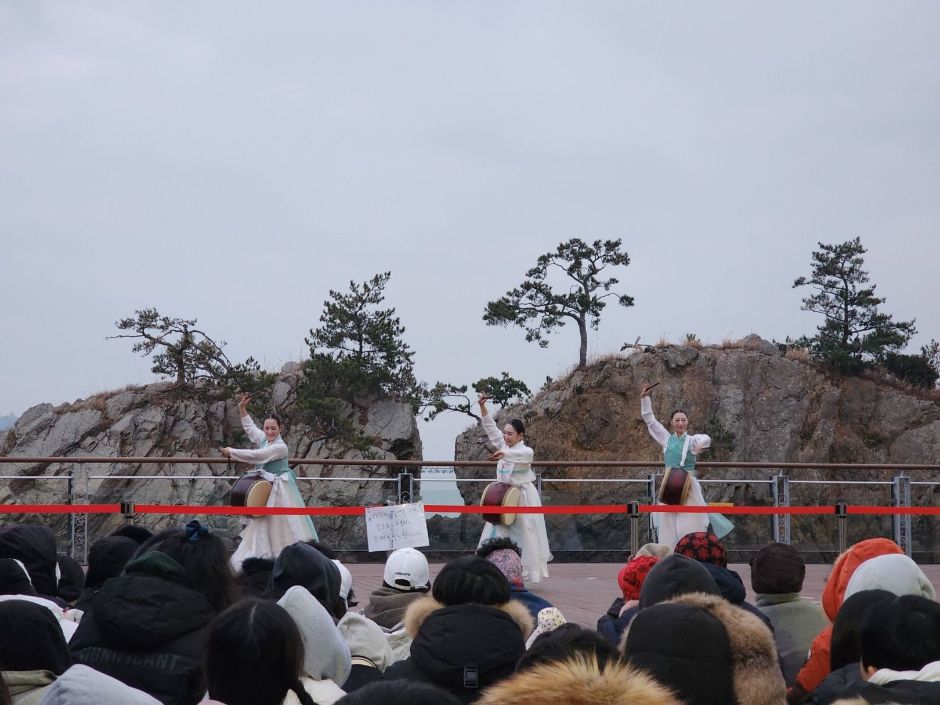
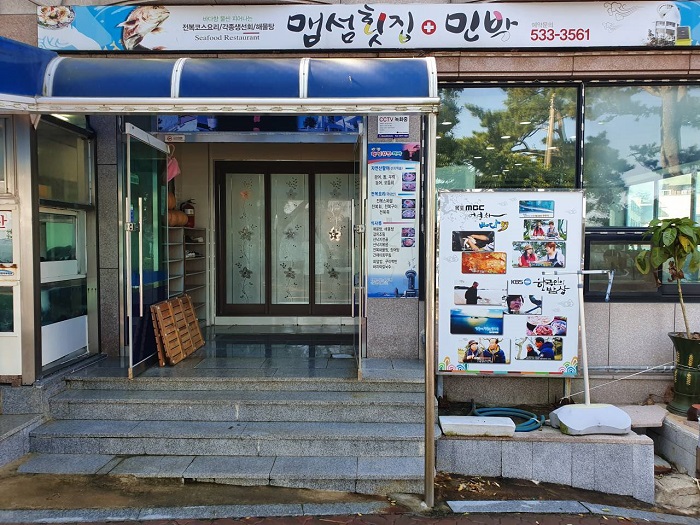
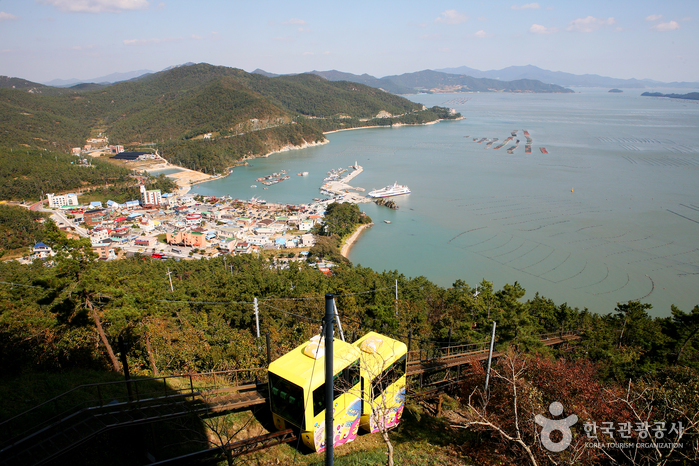


![Templo Daeheungsa (대흥사) [Patrimonio de la Humanidad de la Unesco]](http://tong.visitkorea.or.kr/cms/resource/09/1929609_image2_1.jpg)
 Español
Español
 한국어
한국어 English
English 日本語
日本語 中文(简体)
中文(简体) Deutsch
Deutsch Français
Français Русский
Русский